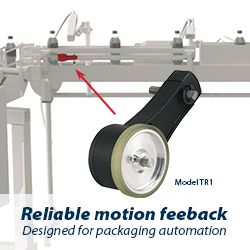In part three of this article series, we highlight the overall valuation process, as well as an analysis of factors both internal and external to the business. Here are part one and part two of this series.
Decoding Business Valuation: What Manufacturers Need to Know (Part 3)
Chuck Faunce | Gorfine, Schiller & Gardyn
In part three of this article series, we highlight the overall valuation process, as well as an analysis of factors both internal and external to the business. Here are part one and part two of this series.
The Valuation Process
There are five steps in the valuation process. In the first two, the appraiser develops micro- and macro economic analyses. The results of these analyses are the inputs to the third step, which is the application of the three approaches to valuation. The results from the valuation approaches are adjusted as required to conform them to the characteristics of the subject interest in the fourth step and, finally, the analysis is synthesized to arrive either at a range of values or point estimate of value.
Analysis of Factors Internal to the Business
Internal microeconomic decisions from the C level management functions -- strategy, marketing, operations, and finance -- determine what assets a business expects to use and how it expects to use them. It also sets expectations for those assets’ capacity to generate future cash flows as well as the risk associated with achieving those cash flows. Results are then measured on the financial statements, which tell management how effectively and efficiently the assets were used in the past and inform management’s decisions about how to use the assets in the future. If management has done its job well, owners will get a return on their investment that is at least sufficient to reward them for risk they took to acquire the assets in the first place.
Analysis of Factors External to the Business
Macroeconomic factors external to the business -- the economy, industry and capital markets -- provide insight into the risks associated with achieving the expectations of management and the cost investors assigned to those risks. Economic and industry conditions could make it easier or harder to achieve expectations, and the capital markets identify the cost associated with those risks.
The cost of debt is an interest rate and the cost of equity is a discount rate, which is a percentage like an interest rate. Interest rates and discount rates are referred to as opportunity costs because any given dollar can only be invested in one place at a time – so when investors make one investment, they’re giving up the opportunity to invest those dollars in another opportunity.
At any given time, the costs of debt and equity will be different for different investments. For example, debt is typically cheaper than equity, and equity for big companies is typically cheaper than equity for small companies.
Those costs also go up and down over time as the capital markets’ perception and tolerance for risk changes. A critical implication of this is that the value of a company can change because of external factors, over which the business’ managers and owners have no control, even if the factors internal to the business don’t change.
Stay tuned for part four of this four-part series, where we discuss the three valuation approaches, the level of value adjustments, and a synthesis of everything covered in this series.
About Chuck Faunce
.JPG)
The content & opinions in this article are the author’s and do not necessarily represent the views of ManufacturingTomorrow
Comments (0)
This post does not have any comments. Be the first to leave a comment below.
Featured Product

